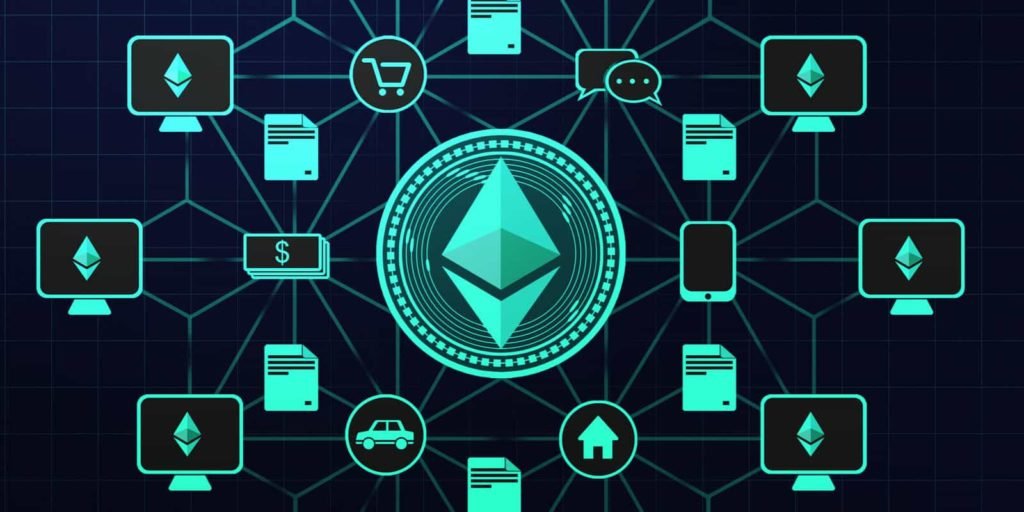Decentralized Finance DeFi and Decentralized Applications

Decentralized Finance (DeFi) is the merger of traditional banking services with decentralized technologies such as blockchain. Importantly, the DeFi community tries to create alternatives to every financial service currently available. These financial services include savings and checking accounts, loans, asset transactions, insurance, and DApps Development Services more.
The importance of DeFi
DeFi continues to play an important role in the evolution of the financial industry for many reasons. First, DeFi expands the functions and scope of currencies. Since only a smartphone is required to participate in the DeFi sector, there is enormous potential to expand the global economy. Therefore, analysts consider this sector to be one of the most important sectors currently developing in the cryptocurrency space.
Editor’s Note: The first Canadian public company to bring defi to investors is DeFi Technologies Inc (NEO:DEFI) , a company focused on investing, incubating and managing trading technologies related to the fast-growing decentralized financial market company of. Decentralized finance is considered to be the next wave of financial innovation on the blockchain.
This commitment to growing the DeFi ecosystem is easily recognized. Importantly, DeFi is the fastest growing sector in blockchain. According to recent reports, DEFI tokens have consistently outperformed their counterparts. Furthermore, since this time period represents the beginning of this consolidation phase, the market now has a unique opportunity to see an entirely new industry blossom.
What are Dapps (Decentralized Applications)?
DeFi relies heavily on Dapps. In order to understand the capabilities of DeFi, you need to grasp the concepts behind Dapps. Dapps are programs designed to operate in a decentralized network. These networks can be blockchains, the Tor network, or distributed ledger technology (DLT). There is no central authority, DApps development company or agency to oversee and approve the business functions of these applications.
In fact, Dapps require very little human intervention. Instead, these platforms incorporate advanced smart contracts to simplify their business systems. Smart contracts are pre-programmed protocols that start when cryptocurrency is received to its address. The important thing is that smart contracts can handle a wide range of tasks, from customer approvals to payments.
The relationship between DAPP and smart contracts
DAPP is the abbreviation of Build Decentralized Apps, translated as: decentralized application. DAPP is an Internet application. The biggest difference from traditional APP is that DAPP runs on a decentralized network, that is, a blockchain network. There is no centralized node in the network that can completely control the DAPP. We all know that APP is centralized. A server needs to be requested to fetch data, process data, etc.
What is a smart contract?
A smart contract is actually a computer protocol that uses a piece of computer instructions to achieve self-verification and automatic execution, and generate verifiable evidence to prove the validity of contract operations. The difference between a smart contract and a traditional paper contract is that a smart contract is a smart contract used by many blockchain networks that function like a vending machine. Smart contract and vending machine analogy: If you transfer bitcoin or other cryptocurrencies to a vending machine (analog ledger), once the input meets the requirements of the smart contract code, it will automatically perform the obligations agreed upon by both parties. Generated. Therefore, Build a cross chain bridge the code itself explains the relevant obligations of the parties involved.
Key Components of DeFi
Today, there are more DeFi applications than ever before. These applications are already saving businesses and customers time and money. As the DeFi space expands, it is important to understand the common characteristics of all DeFi Dapps. The following are the most common features:
open source
DeFi applications should be open source. Open source coding refers to the fact that the coding is made public. This way, anyone can audit it and verify its functionality, security, and capabilities.
transparency
Since most DeFi applications run on public blockchains such as Ethereum, all transactions are public. In fact, all activity on the blockchain is public.
global audience
Dapps represent an extension of the way developers envision financial platforms. Anyone anywhere in the world can participate in the DeFi platform. All you need is a smartphone with internet access and you can enter the DeFi community in minutes.
Thus, for the first time ever, DeFi Dapps have the ability to provide financial services to the unbanked in the world.
No permission required
Anyone can develop DeFi applications and make them available to the world. Additionally, anyone can participate in DeFi Dapps without requiring approval. This strategy is a far cry from today’s financial system, which requires potential users to traverse a myriad of regulatory verification systems before participating in the global economy.
interoperability
Another pillar of the DeFi community is interoperability. Interoperability is critical. Users can stack their DeFi products, expanding new age economic exposure.
flexibility
Due to the openness of the DeFi environment, there is more flexibility on the platform. Users also get quite a few options through the integration of third-party apps.
DeFi applied to lending
If you’ve ever applied for a loan, you know the process is time-consuming. Fortunately, the DeFi community has come up with some interesting ways to improve this market.